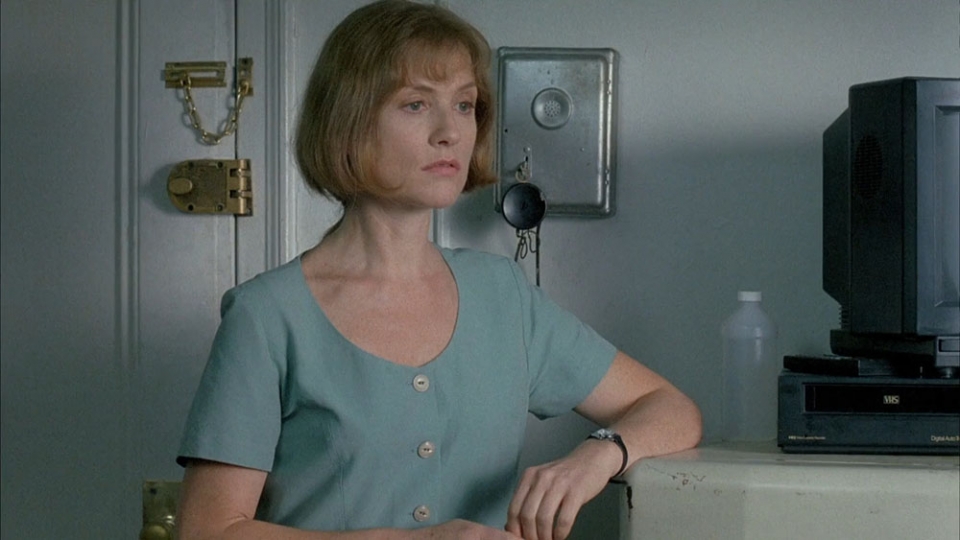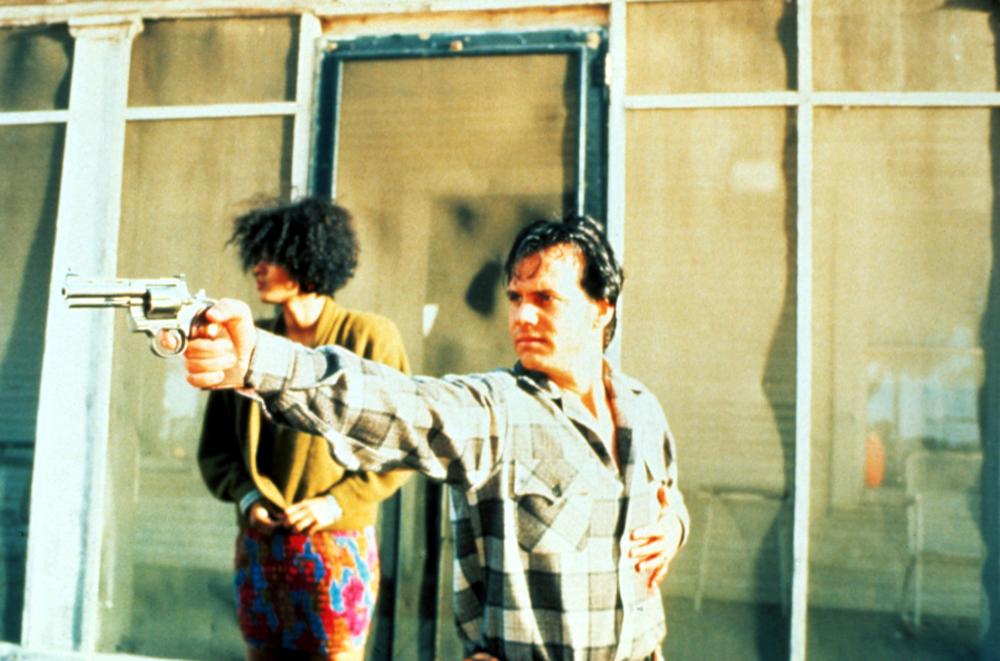6. The Blackout (1997)

A renegade provocateur who always marched to the beat of his own drum, Abel Ferrara was among the earliest American directors to move from celluloid to digital — expertly mining the grainy aesthetic of early DV cameras to visually communicate a sense of paranoia and unease in a way that traditional filmmaking simply could not.
One of his earliest brushes with digital filmmaking is this Lynchian psycho-thriller about a washed-out, alcoholic Hollywood actor (Matthew Modine) leading a life of excess in Miami who keeps barreling deeper into the void while trying to find out exactly what happened to her ex-girlfriend, who had an abortion and hasn’t been returning any of his calls. Things go from bad to worse from that point on, with the film slowly settling into a chilling study of self-denial and paranoia that slips between time frames and points of view to observe the interplay between memory and guilt at a deep, granular level.
7. Charisma (1999)

Although he blew through the 1990s decade with a formidable run of genre masterpieces, Japanese maestro Kiyoshi Kurosawa entered the new millennium as a virtual unknown outside of his homeland and hardcore cinephile circles, which made it hard for his early work to get a fair shake overseas. Western audiences are just beginning to catch up to the director’s remarkable contributions to the thriller genre, mostly through his international breakout “Cure”, a blood-curdling procedural that rightfully earned glowing comparisons to David Fincher and Bong Joon-ho and most recently received a Criterion release.
Enigmatic is certainly one way to describe “Charisma”, another criminally underrated title in Kurosawa’s nineties output that is long overdue for rediscovery and doubles down as a perfect gateway to his particular brand of psychological dread. Still haunted by a botched hostage situation, a disgraced, guilt-ridden cop leaves his job and finds more than he bargained for during his retreat at a secluded mountain forest, home to some weird villagers and a mysterious (and lethally poisonous) tree. What follows is a slow-burner high in style and allegory that takes a while implanting itself on the viewer’s mind, providing no quick answers but plenty for you to chew on after the credits have rolled.
8. Amateur (1994)

Hal Hartley cultivated an offbeat approach to small-scale narratives that instantly established him as a major creative force in the American indie scene throughout the ’90s and continues to appeal to newer generations of moviegoers today. And though rarely associated with the thriller genre, the maverick director put a fresh spin on his usual hallmarks — including an unwavering empathy for neurotic loners and social misfits — with this off-kilter romp involving blackmail, botched murder attempts, sexual hang-ups and cruel twists of fate.
“Amateur” finds arthouse icon Isabelle Huppert in top form as a self-proclaimed nymphomaniac who used to be a nun and now earns a dime writing pornographic stories for sleazy mags. All is well and good until she becomes inadvertently drawn into a dangerous conspiracy after befriending a gang of miscreants including an amnesiac with a troubled past (Martin Donovan) and a distraught adult film actress (Elina Löwensohn). More so than any of the other movies on this list, “Amateur” tows the line between deadpan comedy and full-blown farce, but despite the occasionally jarring tonal shifts, Hartley makes sure to give his film that extra oomph by allowing the story to wade into much-darker territory.
9. Labyrinth of Dreams (1997)

This experimental slow burner directed by cinematic punk rebel Gakuryu Ishii has an impossibly irresistible set-up: Tomiko, a wide-eyed young girl from the countryside, dreams of relocating to the city, where she hopes to land her dream job as a bus conductor. Just when the dull repetition of her line of work appears to become unbearable, she falls heads over heels in love with her attractive co-worker (Tadanobu Asano), a fellow bus driver who she also suspects of being a serial killer.
Based on a short story by Kyūsaku Yumeno, “Labyrinth of Dreams” suggests a cross between the atmospheric dread of Shinya Tsukamoto, the oneiric elusiveness of David Lynch and Ishii’s own unmistakable talent to get under the viewer’s skin. The film’s true hallmark, though, is how it eerily recalls a bygone era of Japanese cinema with a black-and-white visual presentation that seems straight out of the 1960s. Although largely unavailable on streaming, you can actually find a decent copy of the film floating around the web, and with a runtime that barely stretches past the 90-minute mark, you can rest assured it will be time well spent.
10. One False Move (1991)

In a just world, “One False Move” would belong among the canonized ’90s classics we revisit every so often, and its success would have turned writer-director Carl Franklin into a mainstay of the American indie film scene mentioned in the same breath as Gus Van Sant or Gregg Araki instead of an anonymous gun-for-hire who peaked early and is now rotting away his career doing Netflix true-crime miniseries. But alas, this stylish and fatalistic neo-western about a simple-minded Arkansas sheriff (Bill Paxton) caught in the crossfire of an ongoing LAPD cross-country manhunt had been neglected for decades before amassing a considerable cult following in recent years.
A heart-stopping study in race relations, power dynamics and bone-deep prejudices still ingrained in America’s social fabric, “One False Move” is the rare case of a film that’s high both on substance and style. Believe it or not, there was a stretch in time from the late-‘80s to the mid-’90s where you couldn’t watch a big Hollywood tentpole without running into Bill Paxton, who collaborated with the likes of James Cameron, Ron Howard, and Sam Raimi. The beloved supporting star delights as a schlub-turned-unlikely hero with an understated performance that sneaks up on you.